Abstract
Men employed in a nickel refinery in South Wales were investigated to determine whether the specific risks of developing carcinoma of the bronchi and nasal sinuses, which had been associated with the refining of nickel, are still present. The data obtained were also used to compare the effect of age at exposure on susceptibility to cancer induction and to determine the rate of change of mortality after exposure to a carcinogenic agent had ceased.
Eight hundred and forty five men were studied who had been employed in the industry for at least 5 years and whose first employment was in or before April 1994. All but 27 (3.2 per cent) were traced until death or January 1, 1967.
Altogether 482 of the men had died: 113 from lung cancer and 39 from nasal cancer. In men employed before 1925, deaths from lung cancer varied from about 5 to 10 times the numbers that would have been expected from the corresponding national mortality rates, while the deaths from nasal cancer varied from about 100 to 900 times the expected numbers. Among men first employed in 1925 or after there were 8 deaths from lung cancer against 6.2 expected and no deaths from nasal cancer. The death rate from causes other than cancer was similar to that experienced by men in the same geographical area irrespective of their date of first employment.
Susceptibility to the induction of nasal cancer increased with age at first exposure, but susceptibility to the induction of lung cancer varied irregularly. The trends in susceptibility showed some similarity to the trends in the national mortality among men employed at similar ages. It is suggested that susceptibility to cancer induction is determined by the amount of previous exposure to other agents.
The risk of developing nasal cancer persisted with little change 15 to 42 years after the carcinogen was eliminated whereas the risk of developing lung cancer decreased. If the effects of cigarette smoking and the specific occupational hazard interact, the reduction in the risk of lung cancer could be due to the differential elimination of heavy cigarette smokers.
Full text
PDF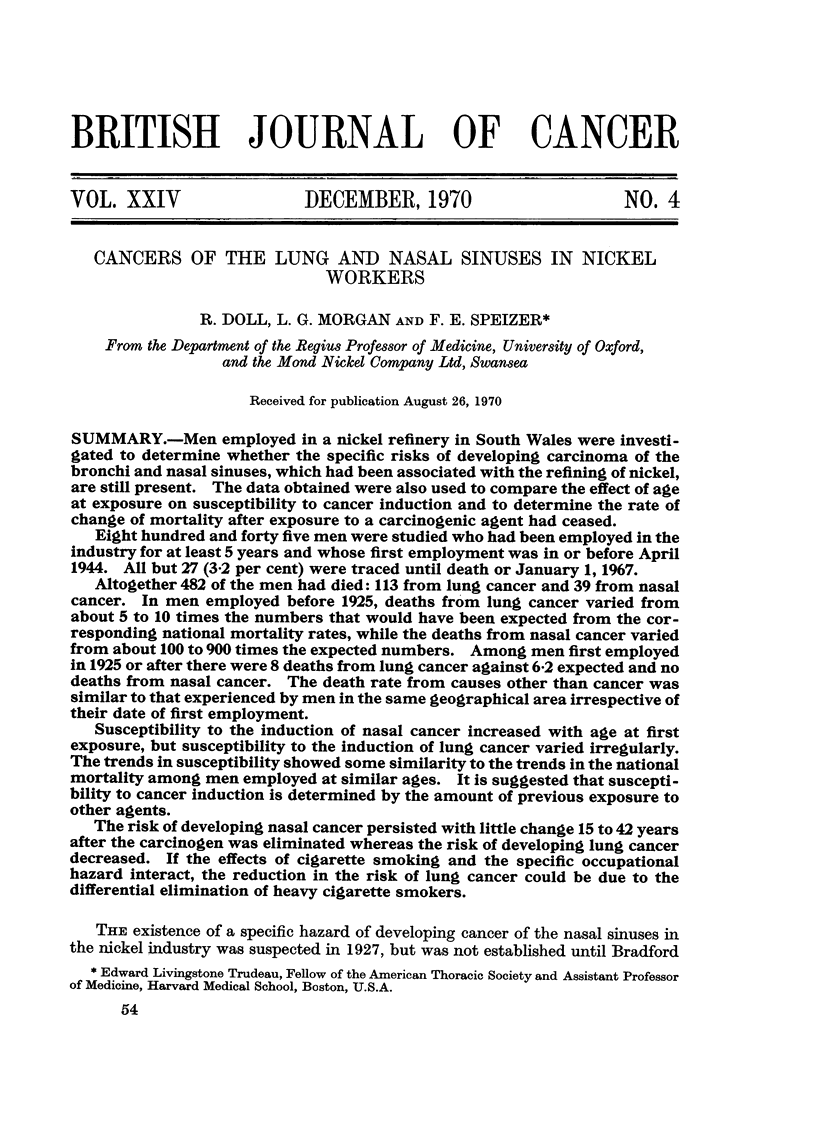
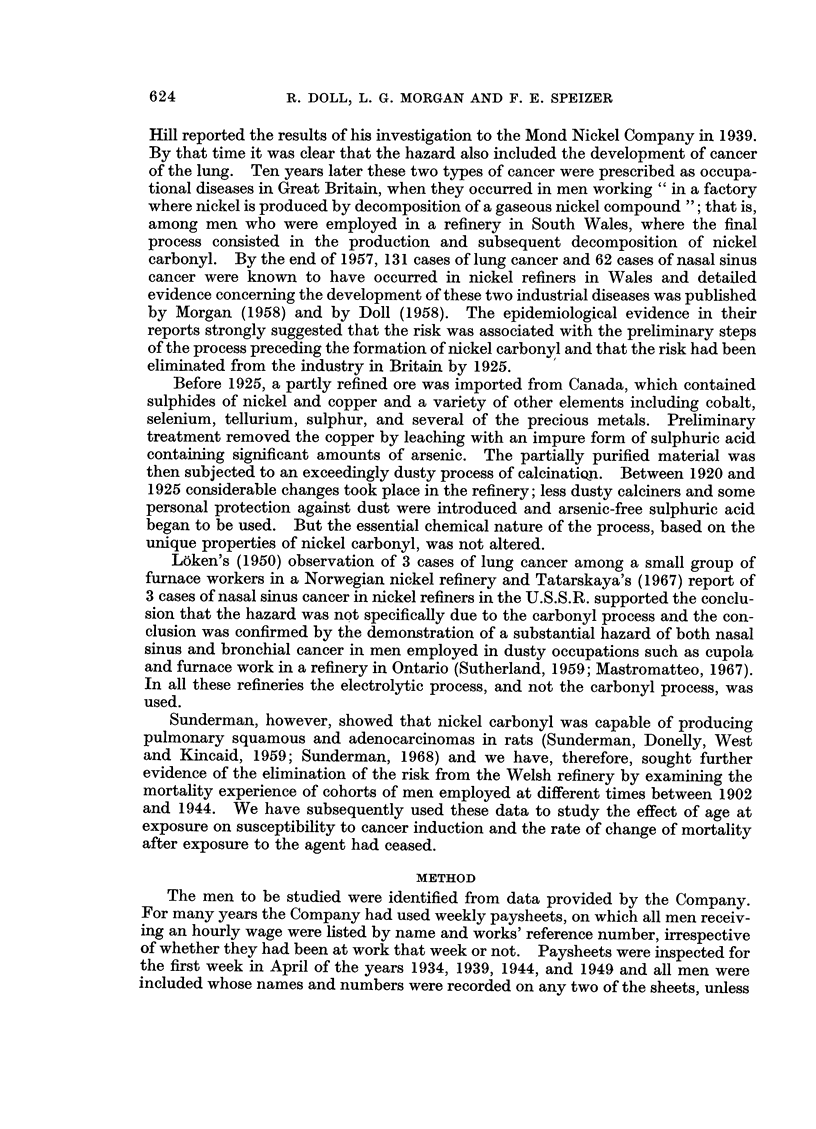
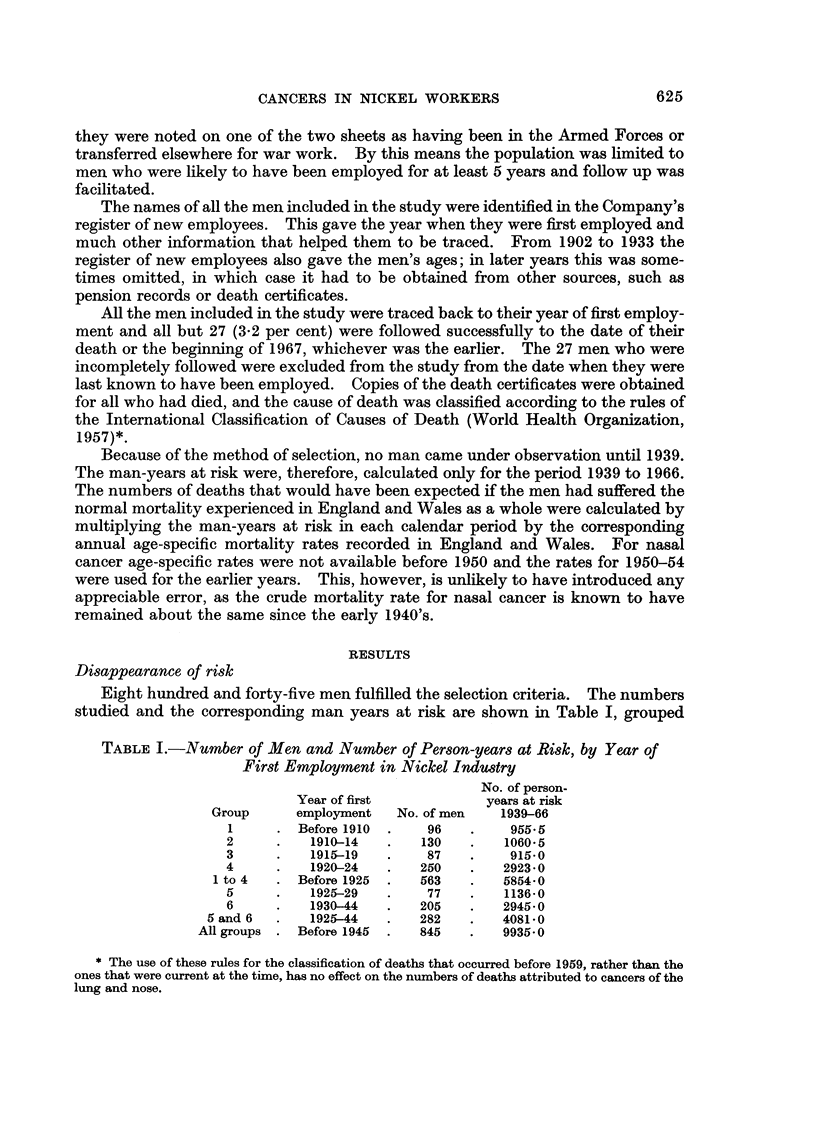
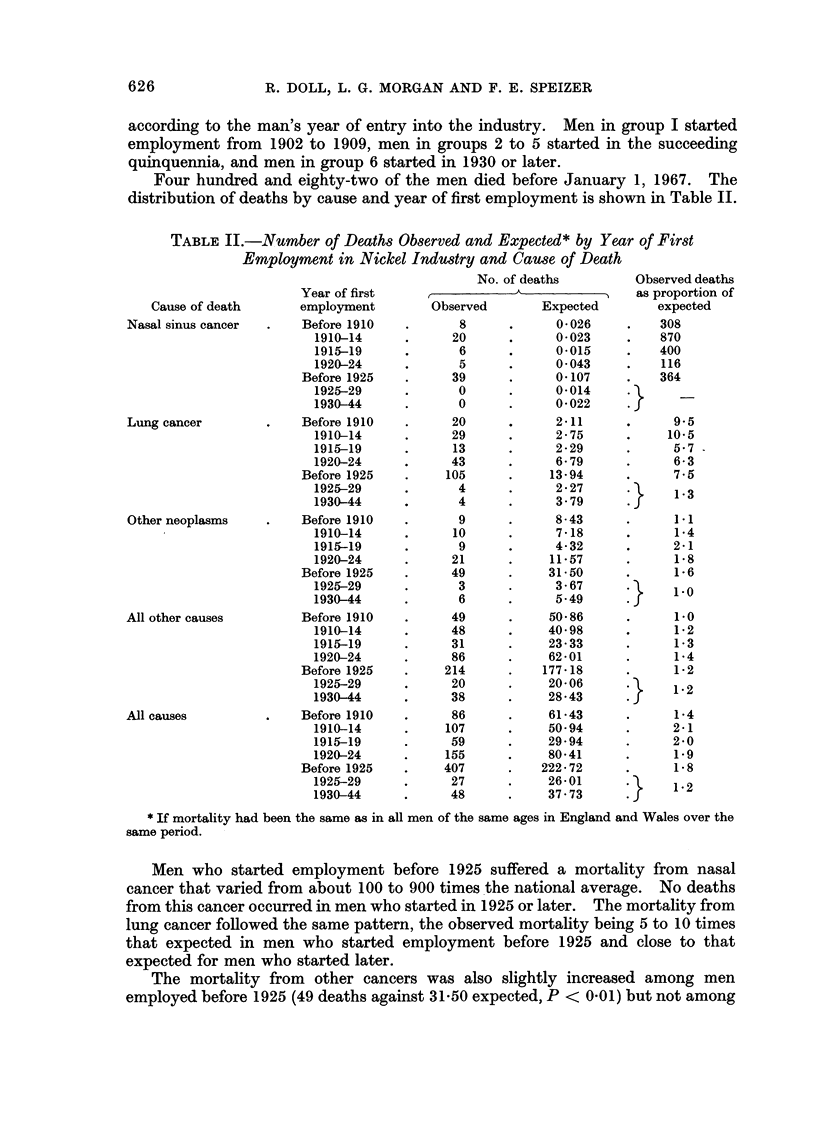
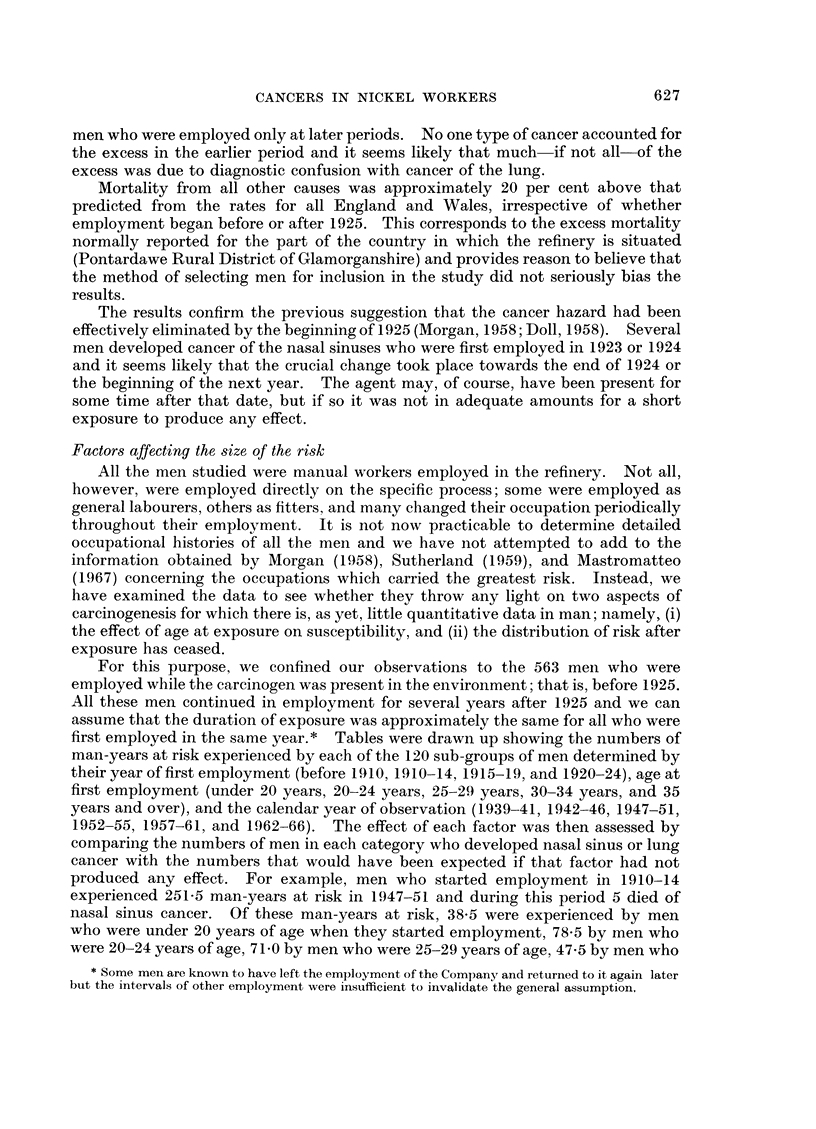
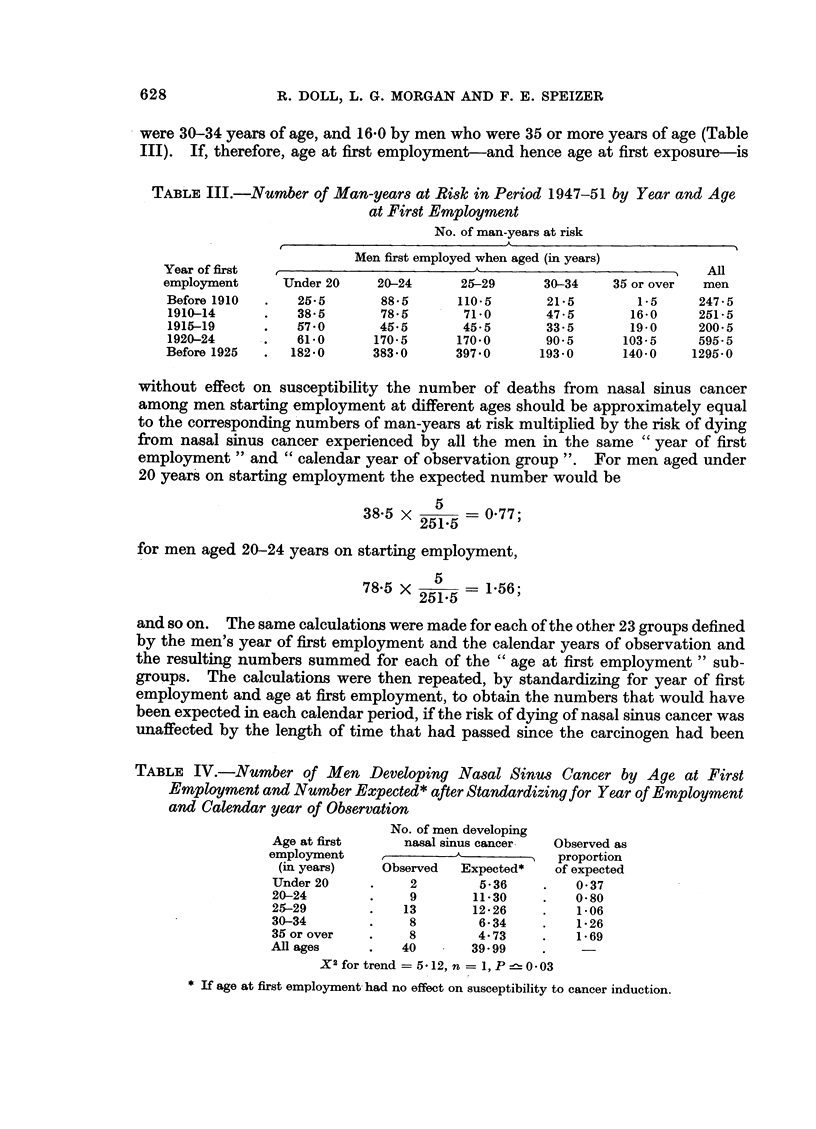
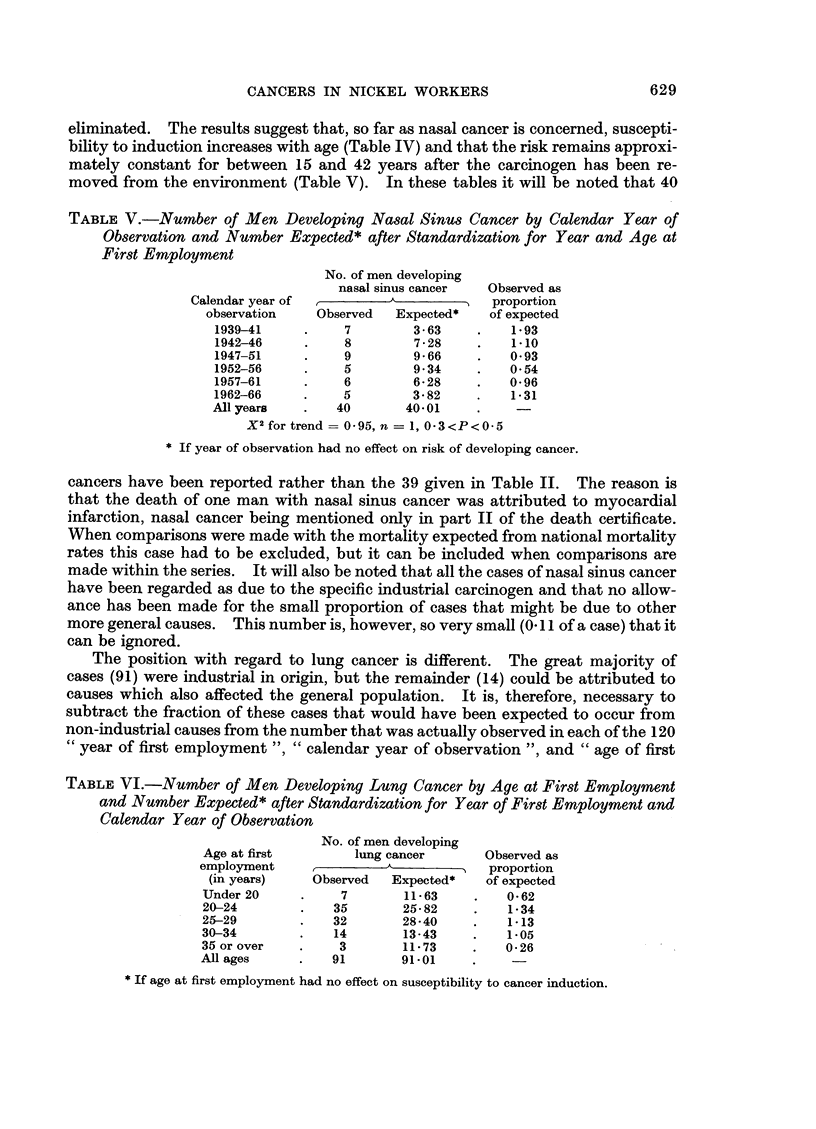
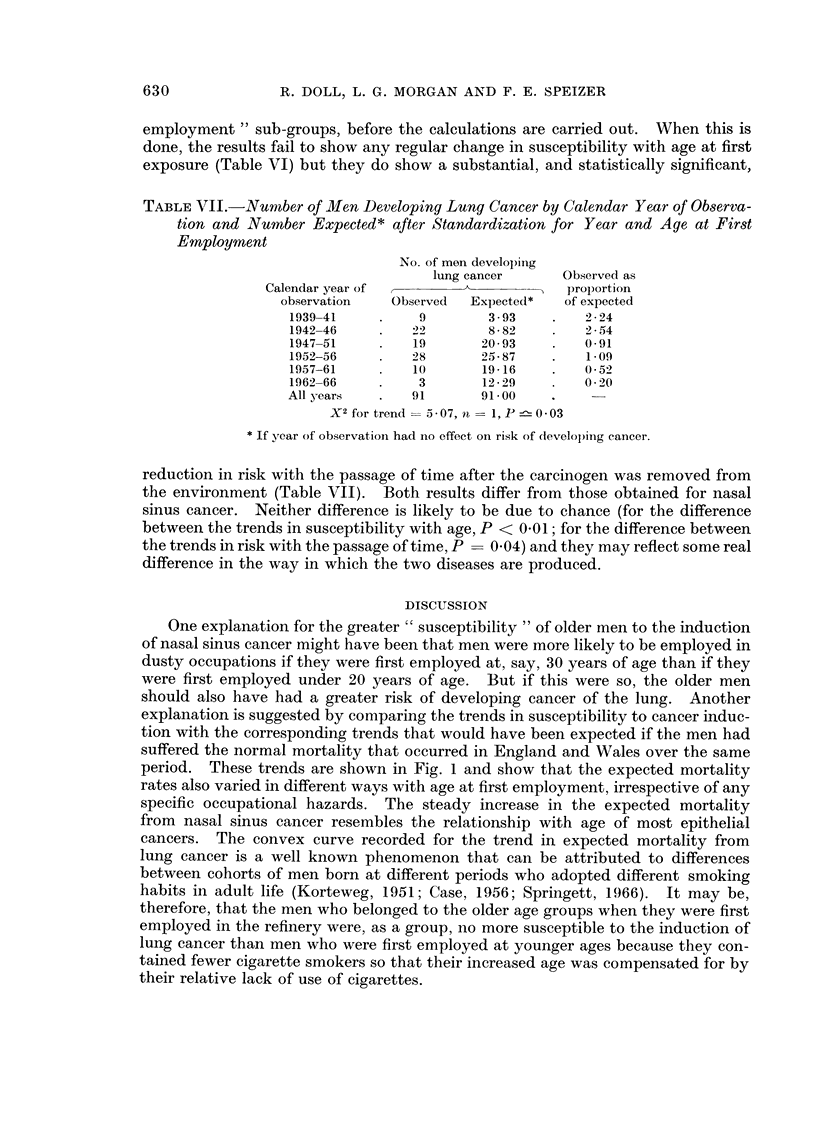
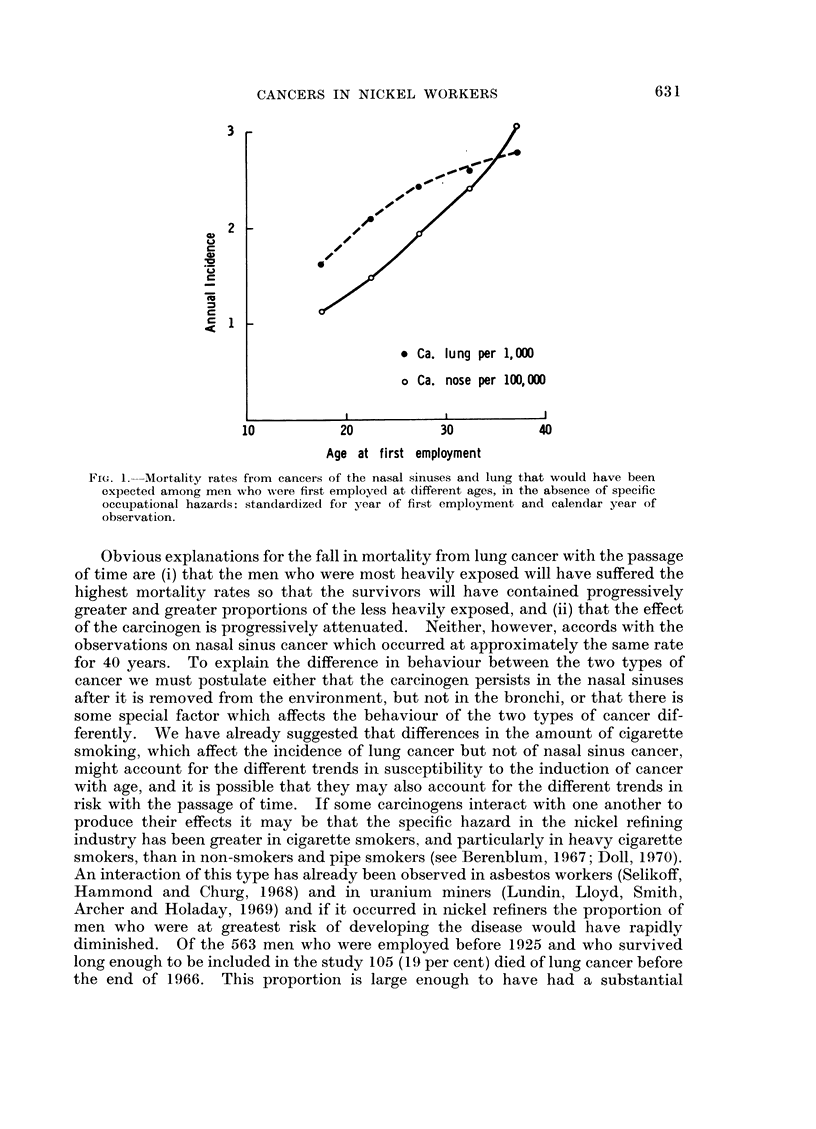
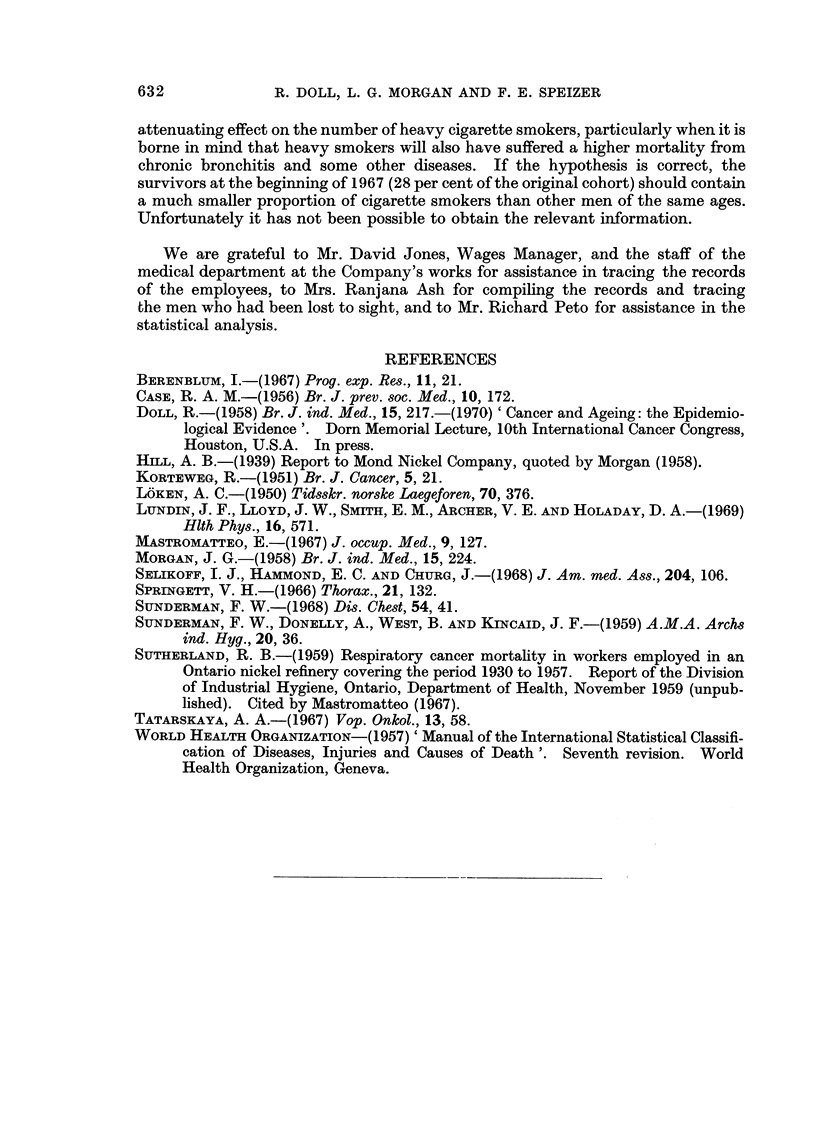
Selected References
These references are in PubMed. This may not be the complete list of references from this article.
- CASE R. A. Cohort analysis of cancer mortality in England and Wales; 1911-1954 by site and sex. Br J Prev Soc Med. 1956 Oct;10(4):172–199. doi: 10.1136/jech.10.4.172. [DOI] [PMC free article] [PubMed] [Google Scholar]
- DOLL R. Cancer of the lung and nose in nickel workers. Br J Ind Med. 1958 Oct;15(4):217–223. doi: 10.1136/oem.15.4.217. [DOI] [PMC free article] [PubMed] [Google Scholar]
- Lundin F. E., Jr Lloyd JW, Smith EM, Archer VE, Holaday DA: Mortality of uranium miners in relation to radiation exposure, hard-rock mining and cigarette smoking--1950 through September 1967. Health Phys. 1969 May;16(5):571–578. doi: 10.1097/00004032-196905000-00004. [DOI] [PubMed] [Google Scholar]
- MORGAN J. G. Some observations on the incidence of respiratory cancer in nickel workers. Br J Ind Med. 1958 Oct;15(4):224–234. doi: 10.1136/oem.15.4.224. [DOI] [PMC free article] [PubMed] [Google Scholar]
- Springett V. H. The beginning of the end of the increase in mortality from carcinoma of the lung. Thorax. 1966 Mar;21(2):132–138. doi: 10.1136/thx.21.2.132. [DOI] [PMC free article] [PubMed] [Google Scholar]


